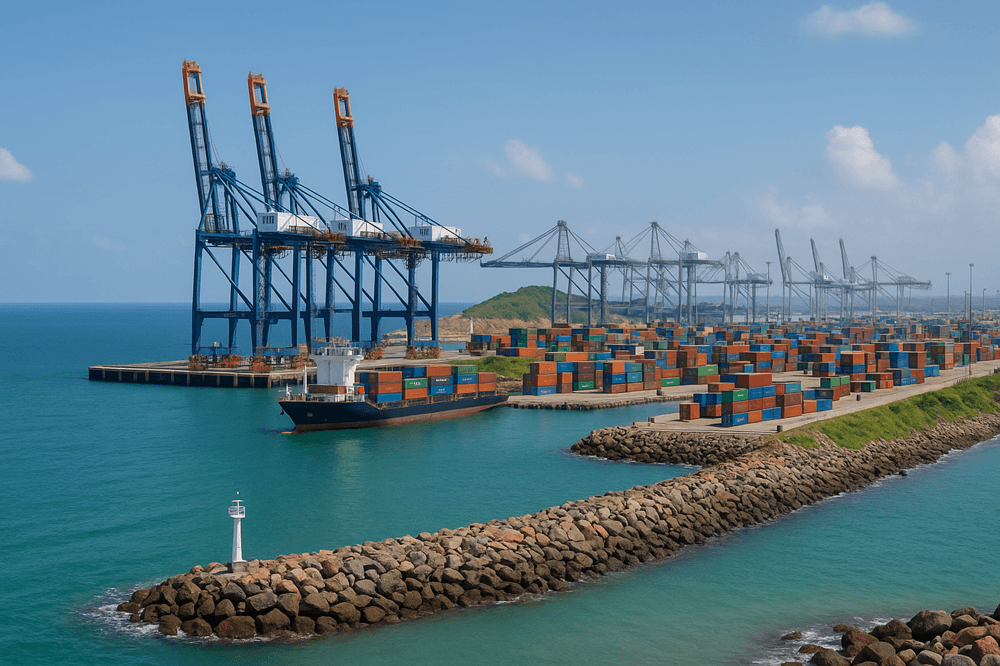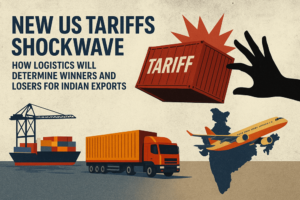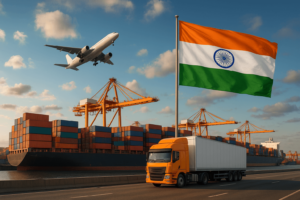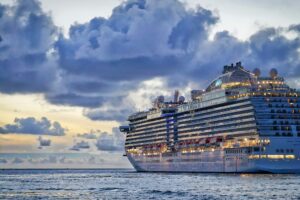
Vizhinjam Port: Why India’s Deepest Natural Seaport Is a Game ChangerOn 2nd May 2025, India marked a major maritime milestone with the inauguration of the Vizhinjam International Seaport by Prime Minister Narendra Modi. As India’s deepest natural port, Vizhinjam is poised to transform the country’s role in global trade and shipping. But why is this port so important — and what challenges lie ahead?
What Makes Vizhinjam Port a Maritime Marvel?
Located in Kerala, Vizhinjam Port is built on a granite seabed with a natural depth of over 20 meters, making it deeper than JNPT, Mundra, and Chennai ports. This enables it to accommodate Ultra-Large Container Vessels (ULCVs) that carry more than 24,000 TEUs — without the need for expensive and environmentally damaging dredging.
The port features AI-powered Vessel Traffic Management, developed by IIT Madras, ensuring seamless and safe maritime operations. Its strategic location, just 10 nautical miles from the busy east-west international shipping lanes, drastically cuts deviation time and fuel costs for ships — a huge advantage over other Indian ports located farther inland.
Reducing India’s Dependence on Foreign Ports
At present, India loses over $220 million annually by routing nearly 75% of its transshipment cargo through foreign ports like Colombo and Jebel Ali. Vizhinjam aims to change this.
With a ₹20,000 crore investment and a planned capacity of 5 million TEUs by 2028, Vizhinjam is set to handle a large chunk of India’s transshipment, especially for South and East India. This could dramatically boost local industries and help India become more self-reliant in maritime logistics.
Key Milestones So Far
- Commercial operations began in late 2024.
- Over 250 container ships, including the giant MSC Türkiye, have already docked.
- In early 2025, the port was handling over 100,000 TEUs per month, surpassing many established Indian ports.
- Vizhinjam is now part of MSC’s Jade Service Route, directly connecting India to Europe, China, South Korea, and Singapore.
The Adani Group and the Kerala state government have committed an additional ₹9,500 crore for Phase 2 expansion, which will triple the port’s capacity.
Challenges Ahead
Despite its promise, Vizhinjam Port faces several hurdles:
- Monsoonal weather from both the Arabian Sea and Bay of Bengal can disrupt operations.
- Poor connectivity to key industrial hubs like Chennai and Coimbatore limits its logistical potential.
- Infrastructure constraints and land scarcity in Kerala make expansion and warehousing difficult.
- Regulatory inefficiencies and local environmental protests, especially from coastal communities, highlight the need for sensitive and sustainable growth.
Lessons from Hong Kong: Building Upwards, Not Outwards
Kerala can take cues from Hong Kong’s vertical warehousing model, which maximizes limited land through smart, upward construction. Improving multi-lane highways, rail links, and developing Free Trade Economic Zones (FTEZs) around Vizhinjam could further boost its global competitiveness.
Opening up the port to more global terminal operators and international shipping lines beyond MSC will be key to achieving true transshipment hub status.
Why Vizhinjam Port Matters to Every Indian
Vizhinjam isn’t just another port — it’s India’s strategic leap in global shipping. It promises to:
- Reduce our dependence on foreign ports
- Save billions in cargo handling and shipping costs
- Fuel growth for South Indian industries
- Generate employment, infrastructure development, and export competitiveness
But for Vizhinjam to reach its full potential, it will need the backing of government, industry, and local communities, working in harmony to ensure sustainable and inclusive growth.
As India aims to become a global maritime powerhouse, Vizhinjam Port represents a bold step toward that vision. Its success could reshape India’s shipping landscape and strengthen its place in global trade networks.












